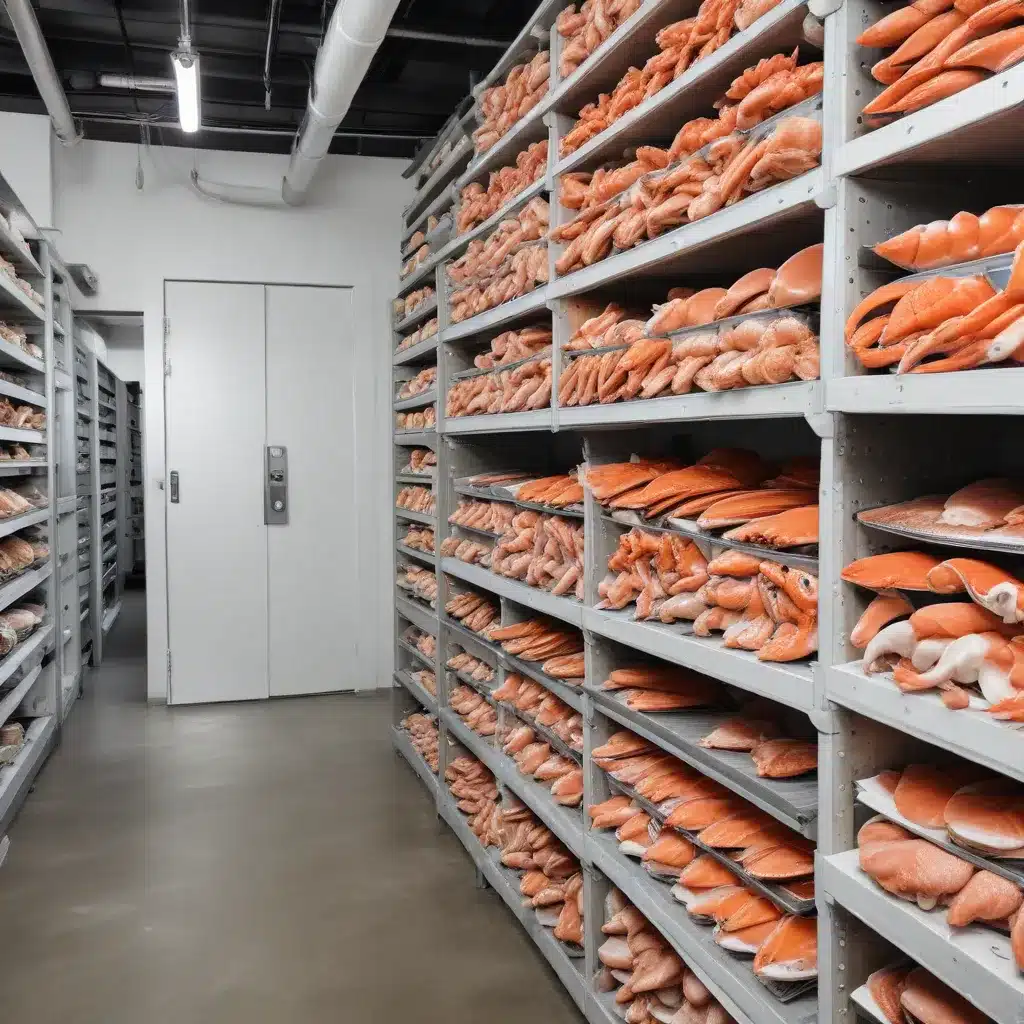
As a seafood dining expert for Fish Tales Cafe, I’ve learned that elevating one’s culinary craft starts not in the kitchen, but behind the scenes – in the strategic handling and storage of seafood. From the moment a fillet or shellfish leaves its oceanic origins, preserving its freshness, quality, and integrity becomes paramount. Proper storage is the unsung hero that allows chefs, home cooks, and enthusiasts to unlock the full potential of their seafood-based creations.
Seafood, by its delicate nature, is particularly susceptible to spoilage and contamination. Mishandling or improper storage can rapidly degrade both the flavor and texture, diminishing the overall dining experience. However, with a keen understanding of temperature management, humidity control, and specialized containment methods, we can extend the shelf life and maintain the pristine qualities that define exceptional seafood.
Beyond just preserving freshness, mastering seafood storage unlocks a world of culinary possibilities. From the delicate aromas of en papillote preparations to the supple texture of a perfectly poached cod, the nuances that captivate our senses are directly linked to how the ingredients were handled. By maintaining the integrity of each component, we empower ourselves to explore global seafood traditions, experiment with novel cooking techniques, and ultimately, deliver dishes that inspire and delight.
Principles of Effective Seafood Storage
At the core of proper seafood storage lies a fundamental understanding of temperature, humidity, and airflow management. Refrigeration is the primary tool in our arsenal, allowing us to slow the natural deterioration process and extend the usable lifespan of our ingredients. However, the specifics of refrigeration protocols – from fridge organization to freezer best practices – can make all the difference.
Temperature control is critical. Seafood is highly perishable, and even modest deviations from the ideal 32-40°F range can accelerate spoilage. Thoughtful placement in the refrigerator, with ample air circulation, helps maintain the cold chain. For longer-term preservation, freezing at 0°F or below is an essential technique, though the art of thawing seafood without compromising texture requires careful consideration.
Humidity and airflow are equally vital. Excessive moisture can foster bacterial growth and unappetizing smells, while inadequate airflow leads to stagnation and accelerated deterioration. Proper packaging and containment methods, such as vacuum-sealing or modified atmosphere packaging, help regulate the microclimate surrounding the seafood.
Environmental factors beyond temperature and humidity also play a role. Lighting, odor control, and overall cleanliness of the storage space contribute to preserving seafood’s inherent qualities. Thoughtful segregation and organization prevent cross-contamination, while meticulous sanitation protocols safeguard against foodborne illness.
Seafood Storage Duration and Shelf Life
Estimating the shelf life of seafood requires an intimate understanding of each variety’s unique properties. Fresh seafood, whether cod, shrimp, or oysters, typically has a relatively short window of 1-3 days in the refrigerator before quality begins to deteriorate. Frozen seafood, when properly stored, can maintain its integrity for several months.
Monitoring for signs of spoilage is crucial. Discoloration, off-odors, and sliminess are all telltale indicators that it’s time to discard the product. Establishing an effective inventory rotation system, where the oldest items are used first, helps minimize waste and ensure only the freshest seafood reaches the plate.
Specialized Storage Solutions
While the basics of refrigeration and freezing apply broadly, innovative storage techniques have emerged to address the unique challenges of seafood. Live seafood holding systems, for example, maintain the optimal conditions to keep oysters, clams, and other bivalves alive and thriving until moments before service. Canned and jarred seafood, when properly sealed, offer extended shelf life without compromising quality.
For the home or commercial kitchen, vacuum-packing and modified atmosphere packaging have revolutionized seafood storage. These methods remove air, inhibit microbial growth, and lock in freshness, allowing home cooks and chefs to enjoy the peak qualities of their ingredients long after procurement.
Regulatory Compliance and Food Safety
Underpinning all aspects of seafood storage is a deep understanding of food safety regulations and best practices. HACCP (Hazard Analysis and Critical Control Points) guidelines establish rigorous standards for temperature monitoring, record-keeping, and traceability – ensuring the seafood that reaches consumers is not only fresh but also free of contaminants.
Proper labeling, with clear indications of harvest or packing dates, is essential for adhering to these food safety protocols. Maintaining meticulous records allows for rapid response in the event of a recall or outbreak, safeguarding public health and preserving consumer trust.
Optimal Seafood Storage for Culinary Applications
The true power of mastering seafood storage lies in its capacity to elevate the culinary experience. By preserving the inherent flavors, textures, and aromas of our ingredients, we empower ourselves to create dishes that captivate the senses and inspire awe.
Whether crafting a delicate ceviche, grilling a succulent cod fillet, or assembling an artful gluten-free seafood tower, the quality of our starting materials directly shapes the final result. Proper storage ensures that each component maintains its distinct character, allowing the creative chef to showcase their expertise and deliver an unforgettable dining experience.
Beyond just taste and texture, strategic seafood storage also enables culinary creativity and visual presentation. Maintaining the vibrant colors and pristine appearance of seafood, for instance, unlocks a world of plating possibilities, from elegant en papillote preparations to visually stunning seafood towers.
In the end, the power of proper seafood storage lies in its capacity to unlock the full potential of our culinary creations. By preserving the intrinsic qualities of our ingredients, we empower ourselves to explore global seafood traditions, experiment with novel cooking techniques, and ultimately, deliver dishes that inspire and delight. It is through this mastery of seafood storage that we, as chefs and home cooks, can achieve culinary excellence and distinction.

